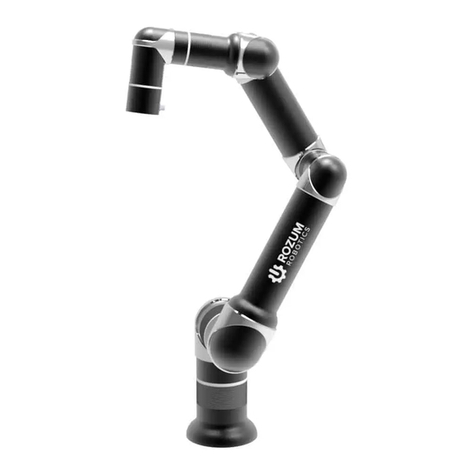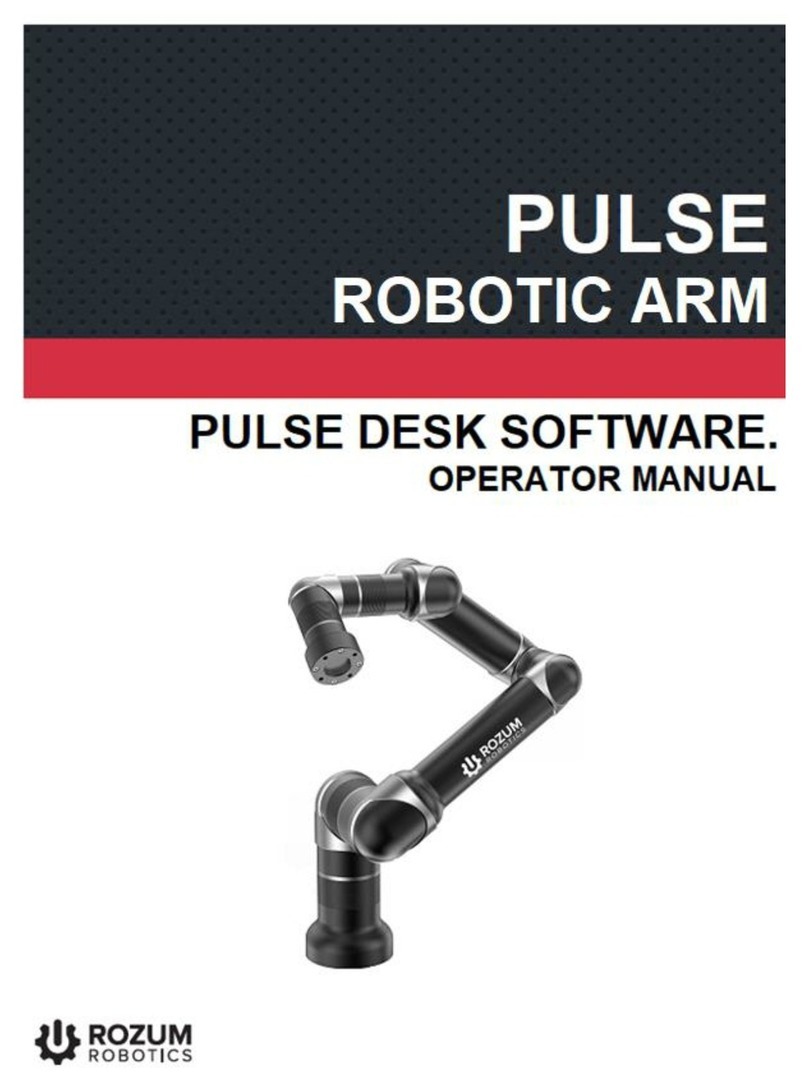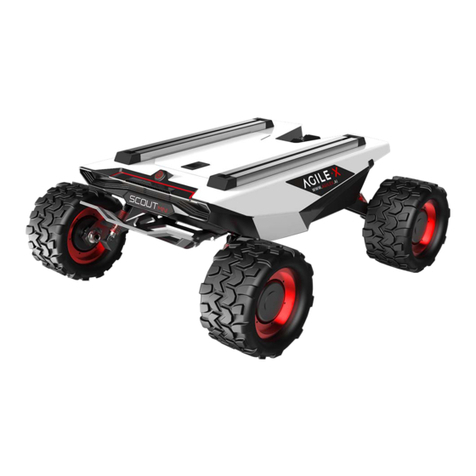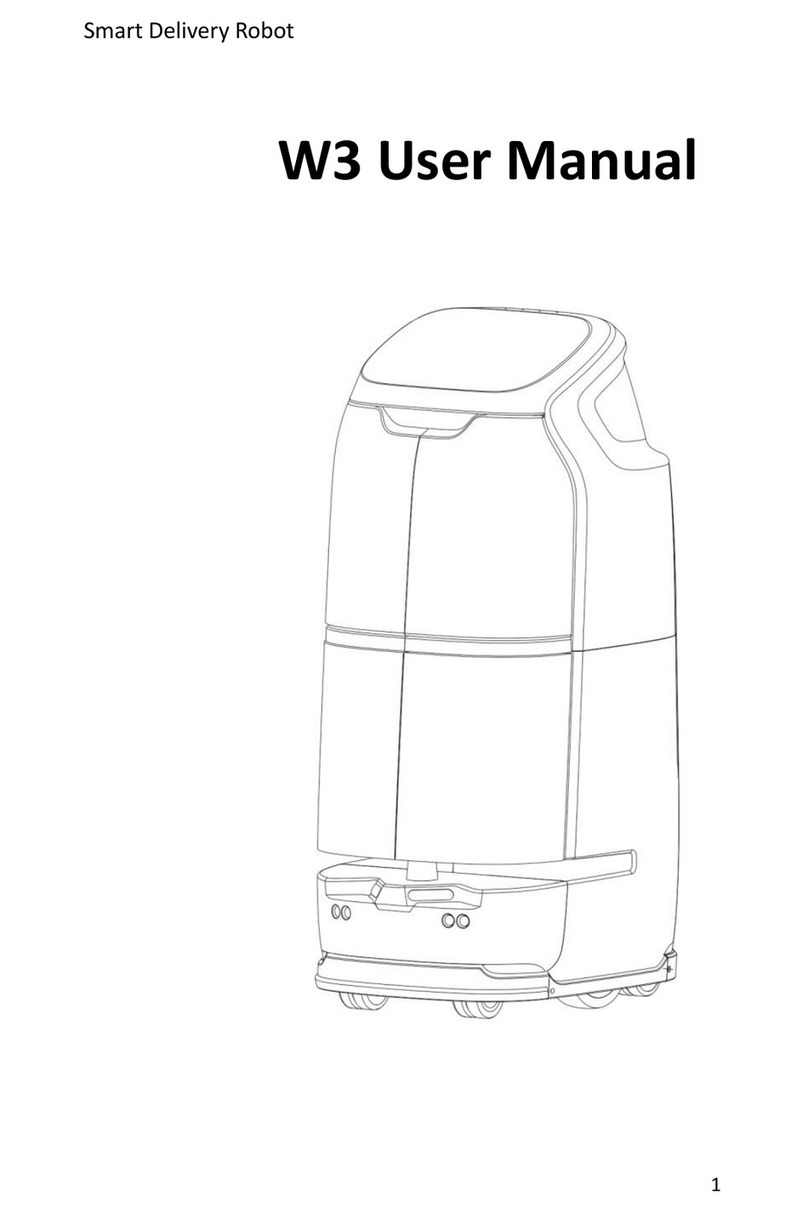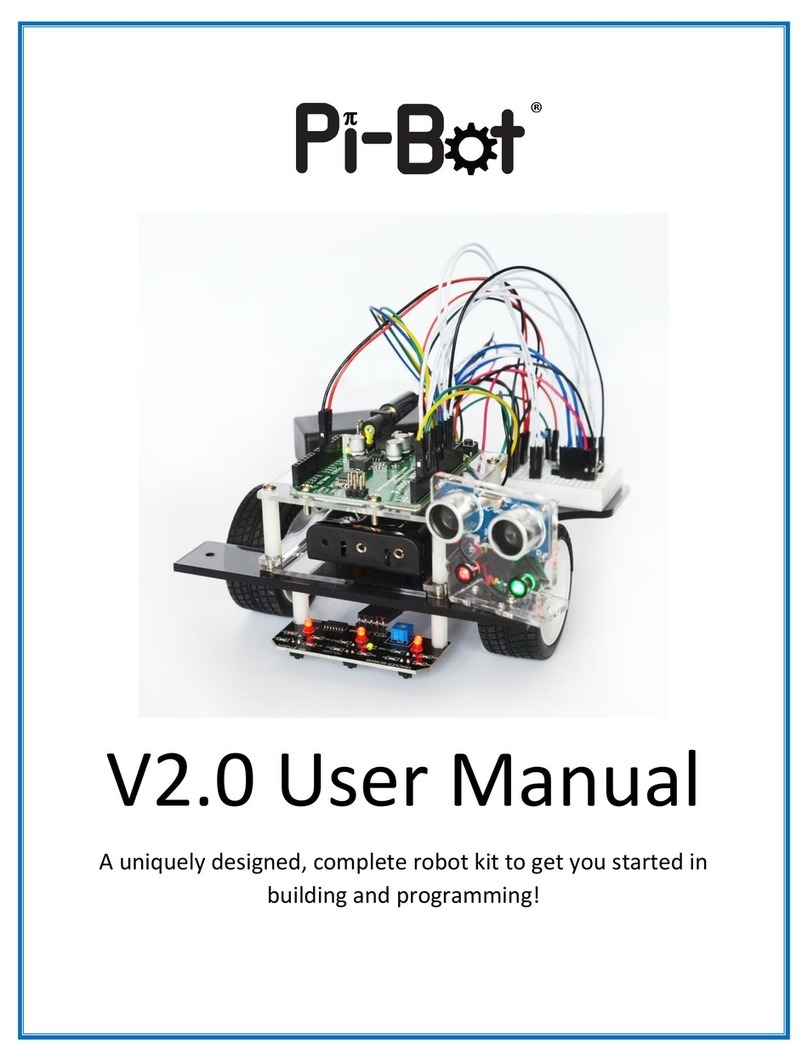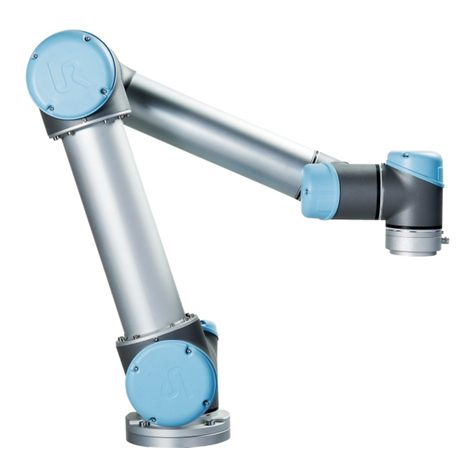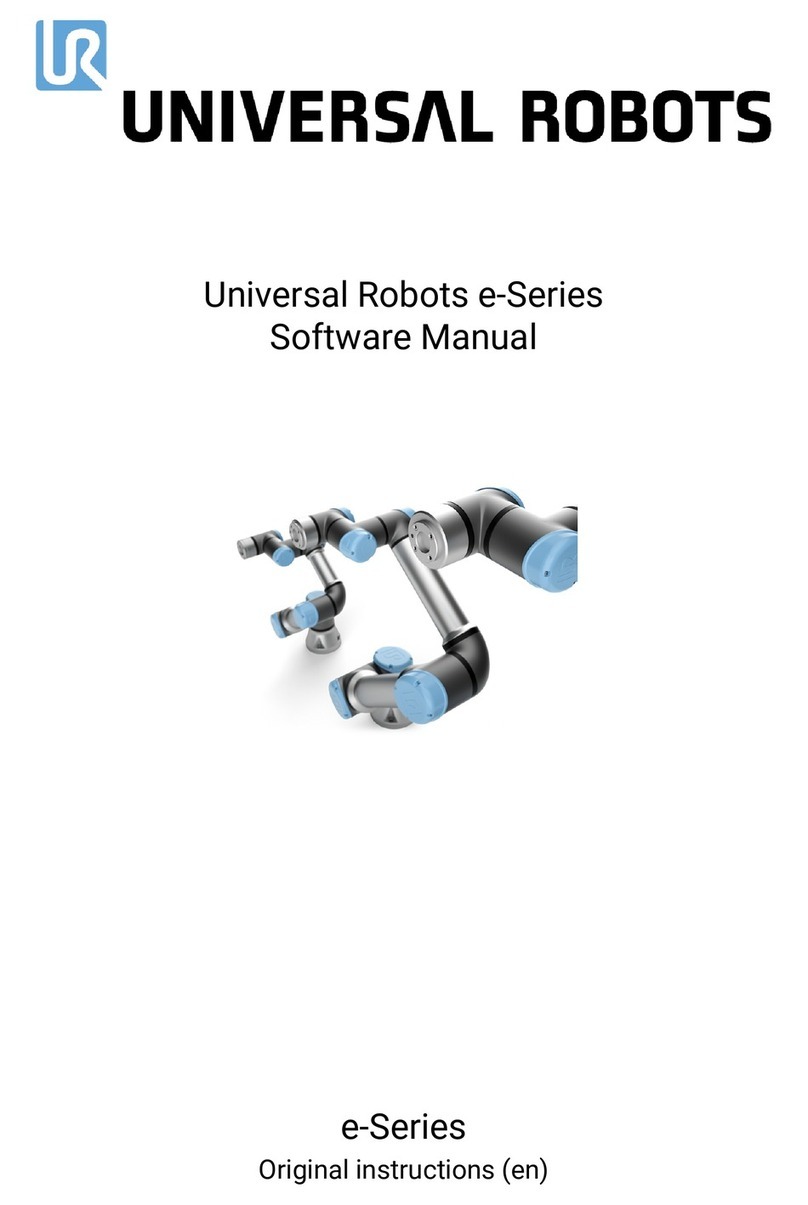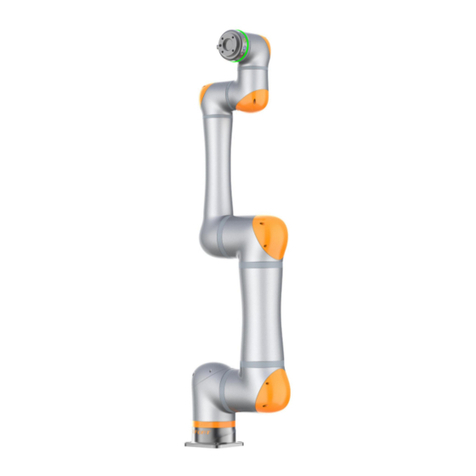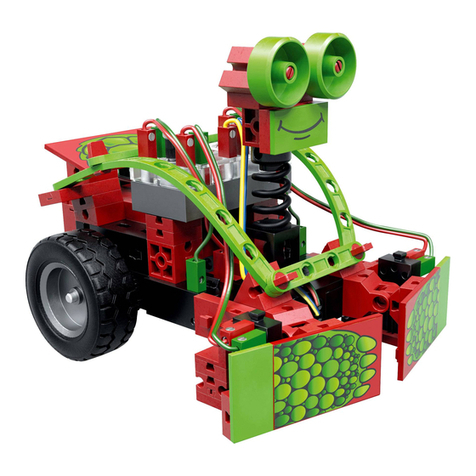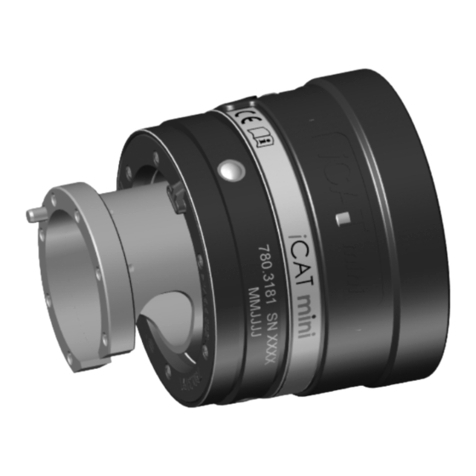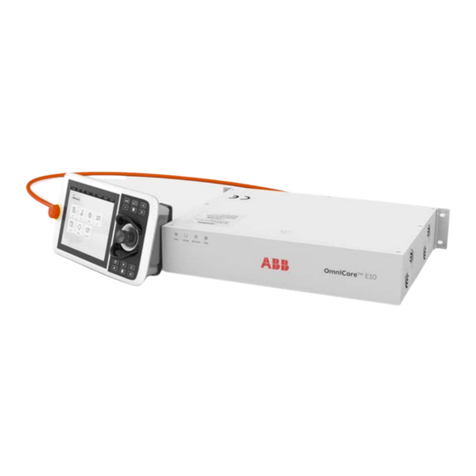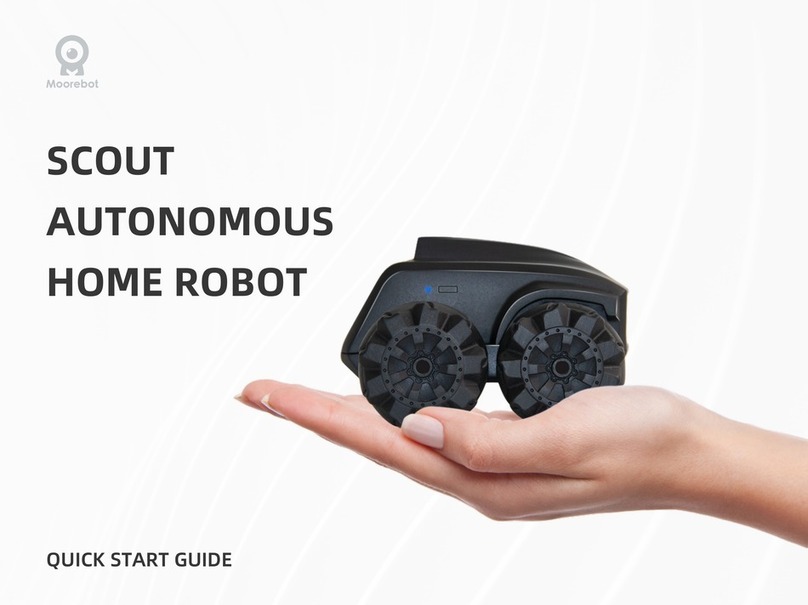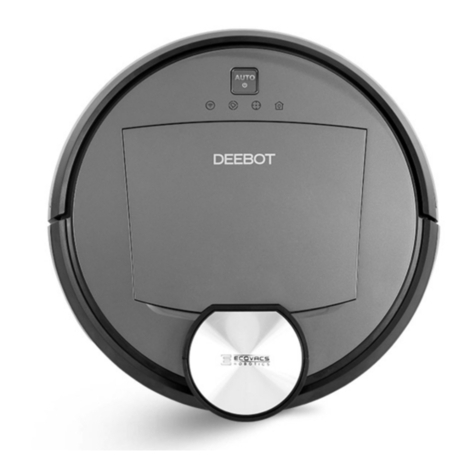TABLE OF CONTENTS
INTRODUCTION......................................................................................................................... 4
WARNING SIGNS AND THEIR MEANINGS......................................................................... 4
1PRODUCT OVERVIEW..................................................................................................... 5
1.1 Basic features and components..................................................................................... 5
1.2 Use restrictions ............................................................................................................... 6
1.3 Supply package............................................................................................................... 7
1.4 Specifications of the robotic arm .................................................................................. 7
1.5 Operating conditions.................................................................................................... 10
1.6 Control box................................................................................................................... 10
1.6.1 The front panel........................................................................................................ 11
1.6.2 The back panel........................................................................................................ 11
1.6.3 Sound signals.......................................................................................................... 12
1.7 Emergency stop button................................................................................................ 12
1.8 Wrist.............................................................................................................................. 14
1.9 Control buttons............................................................................................................. 15
2INSTALLATION................................................................................................................ 15
2.1 General requirements.................................................................................................. 15
2.1.1 Continuous power supply requirement................................................................... 16
2.2 Mechanical integration................................................................................................ 16
2.2.1 Mounting the robotic arm ....................................................................................... 16
2.2.2 Installing the control box........................................................................................ 18
2.3 Electrical integration.................................................................................................... 18
2.3.1 Power connection.................................................................................................... 18
2.3.2 Digital I/O connectors............................................................................................. 18
2.4 Mounting an end effector ............................................................................................ 20
2.5 Integrating the arm into an application..................................................................... 21
3COMMISSIONING............................................................................................................ 23
3.1 Pre-commissioning checks........................................................................................... 23
3.2 Switching the arm......................................................................................................... 24
3.3 Setting up communication with a PULSE arm ......................................................... 24
3.3.1 Static IP................................................................................................................... 25
3.3.2 Dynamic IP ............................................................................................................. 29
3.4 Starting the PULSE DESK.......................................................................................... 29
